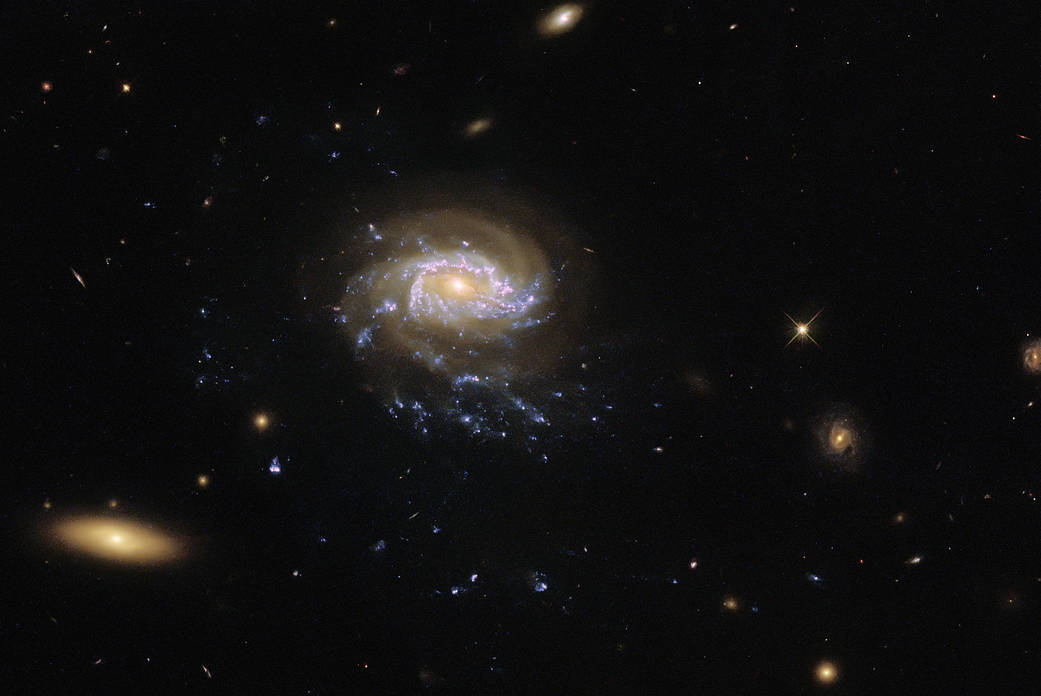5.03.2023

A “jellyfish galaxy” with trailing tentacles of stars hangs in inky blackness in this image from the NASA/ESA Hubble Space Telescope. As jellyfish galaxies move through intergalactic space, gas is slowly stripped away forming trails that resemble tendrils illuminated by clumps of star formation. These blue tendrils are visible below the core of this galaxy, giving it a jellyfish-like appearance. This particular jellyfish galaxy – known as JO201 – lies in the constellation Cetus, which is named after a sea monster from ancient Greek mythology. This sea-monster-themed constellation adds to the nautical theme of this image.
The tendrils of jellyfish galaxies extend beyond the bright disk of the galaxy’s core. This particular observation comes from an investigation into the sizes, masses, and ages of clumps of star formation in the tendrils of jellyfish galaxies. Astronomers hope this will provide a better understanding of the connection between ram-pressure stripping – the process that creates the tendrils of jellyfish galaxies – and star formation.
Hubble’s Wide Field Camera 3 (WFC3) captured this galactic seascape. A versatile instrument that captures images at ultraviolet, infrared, and visible wavelengths, WFC3 is the source of some of Hubble’s most spectacular images.
Text credit: European Space Agency (ESA)
Image credit: ESA/Hubble & NASA, M. Gullieuszik
Quelle: NASA

